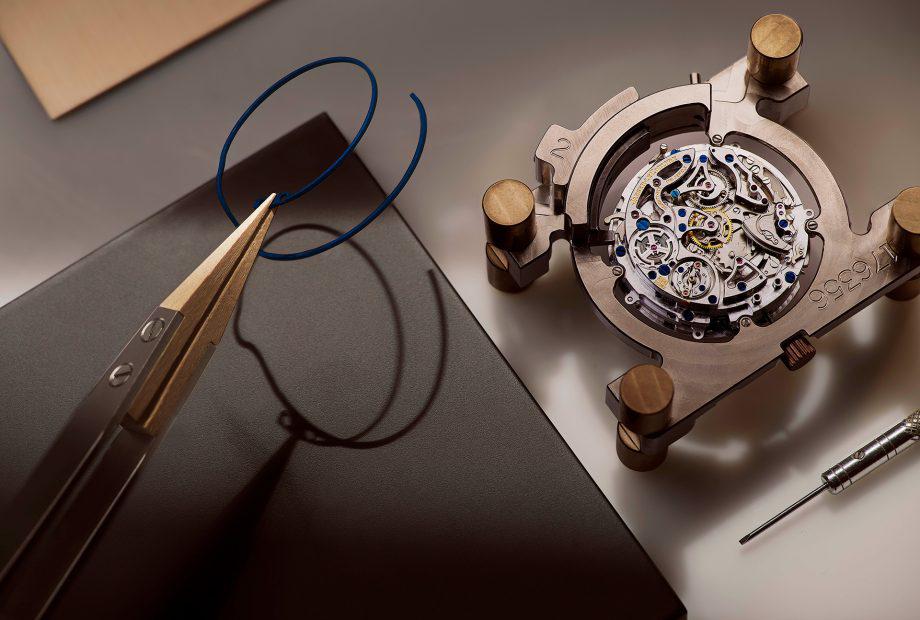For Michel Bourreau, a clock and watch restorer and prototype maker, the inscription of the craftsmanship of mechanical watchmaking and art mechanics on the Representative List of the Intangible Cultural Heritage of Humanity, last December, is nothing short of a victory; one that can be savoured all the more as the application, made jointly by Switzerland and France, was considered exemplary by UNESCO. “It means we now have official recognition of the specific nature of these activities which are characteristic of the Arc Jurassien,” says Bourreau, who was closely involved with the application process. “This acknowledgement is not just remarkable but also extremely important with respect to the preservation and transmission of these skills.”
Mechanical watchmaking gains UNESCO heritage status. Mechanical watchmaking gains UNESCO heritage status. Mechanical watchmaking gains UNESCO heritage status. Mechanical watchmaking gains UNESCO heritage status. Mechanical watchmaking gains UNESCO heritage status
Mechanical watchmaking gains UNESCO heritage status. Mechanical watchmaking gains UNESCO heritage status. Mechanical watchmaking gains UNESCO heritage status. Mechanical watchmaking gains UNESCO heritage status
Mechanical watchmaking gains UNESCO heritage status
by Christope Roulet
The application made in March 2019 has been approved by UNESCO, which in December last year added the craftsmanship of mechanical watchmaking and art mechanics to the Representative List of the Intangible Cultural Heritage of Humanity.
The craftsmanship of mechanical watchmaking has shaped the society and lives of the regions concerned.
The inscription concerns mechanical watchmaking as practiced along the Arc Jurassien, in a region that extends from Geneva to Schaffhausen and from Biel/Bienne to Besançon, as well as the production of automata and music boxes, an art specific to the area around Sainte-Croix. “Encompassing science, art and technology, these craftsmanships call on individual and collective skills, and on theoretical and practical knowledge, in mechanics and micromechanics,” explains the Swiss Federal Office for Culture which supported the application, in collaboration with counterparts in France, as part of a binational steering committee of watchmakers, teachers, museum experts and representatives of French regional authorities. “In addition to their important economic function, mechanical watchmaking and art mechanics have shaped the society and daily lives of the regions concerned, as well as their architecture and urban landscapes.”
The importance of innovation
Estelle Fallet is chief curator at the Musée d’Art et d’Histoire in Geneva. She reminds us how “since the sixteenth century, watchmaking and the many specialities that revolve around it have had a direct impact on social, economic and cultural life in the Arc Jurassien. Now as in the past, the development of new techniques, innovation and research influence other areas as well as shape mindsets, encouraging punctuality, perseverance, dexterity and inventiveness. There are subtle reminders of this in the expressions we use in everyday conversation or the ringing of factory bells.”
Training and transmission are at the heart of measures proposed to safeguard this tradition.
It’s a message shared by Michel Bourreau, who insists on the dynamic nature of the companies and individuals working in mechanical watchmaking and art mechanics: “This intangible heritage isn’t stuck in the past. Innovation is intrinsic to the skills observed in the sector and to its growth. In fact innovation is one of the keys to getting young people interested in these professions and keeping the tradition alive.” Indeed, training and ensuring this expertise is passed on to future generations is central to measures proposed in order to safeguard this unique craftsmanship, alongside means of documenting and archiving. A cross-border group is already at work to put these measures into practice. The first project to see daylight will be a photographic exhibition, held jointly at the Musée International d’Horlogerie in La Chaux-de-Fonds, Switzerland, and the Musée du Temps in Besançon, France.
